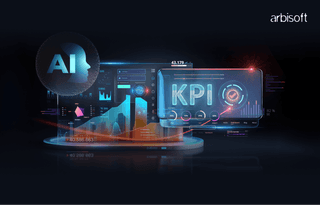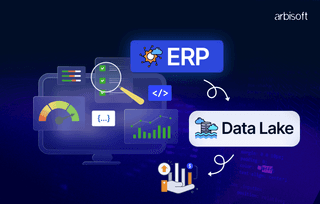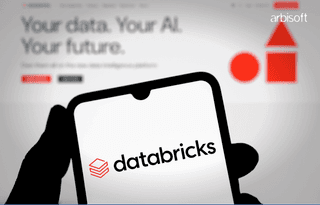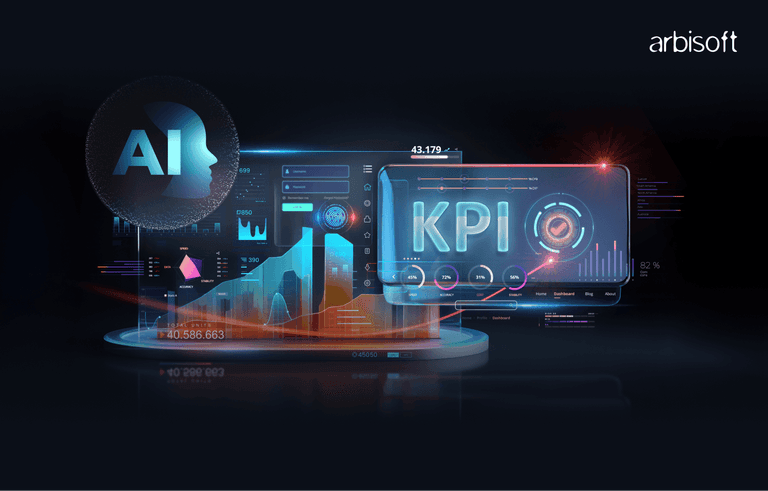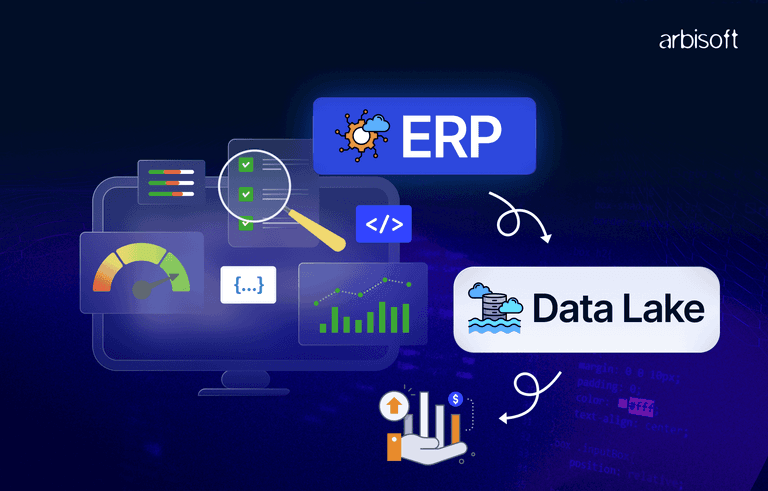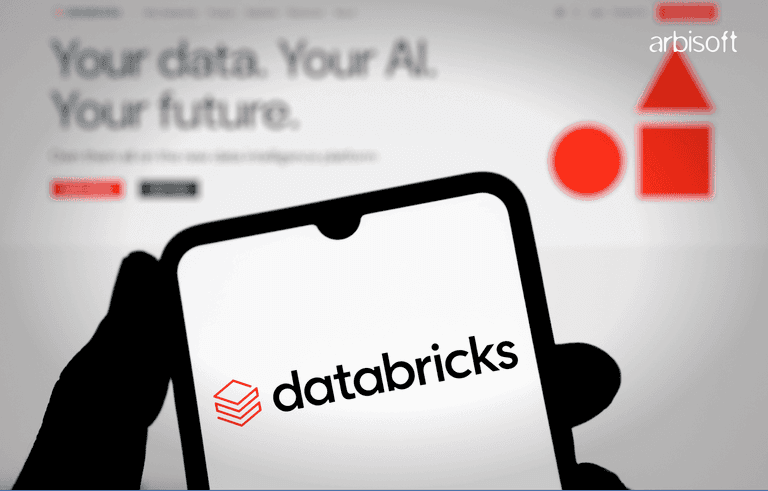We put excellence, value and quality above all - and it shows




A Technology Partnership That Goes Beyond Code

“Arbisoft has been my most trusted technology partner for now over 15 years. Arbisoft has very unique methods of recruiting and training, and the results demonstrate that. They have great teams, great positive attitudes and great communication.”
What Team Model Is Ideal for Early-Stage vs. Enterprise AI Projects?

Let’s shoot straight. If you toss an AI project into a blender without picking the right team structure, you’ll end up with a hot mess. That’s true whether you’re running on ramen and hope or stuck in corporate boardrooms with four-hour strategy meetings.
Today, I’m diving into what actually works when building an AI development team—from hungry startups to heavyweight enterprises. Because when your problems grow fast, your team model needs to be one step ahead.
The High-Stakes Challenge: Balancing Agility and Scalability in AI Teams
Before we talk different team models, let’s face the music. Whether you're in a garage or a Fortune 500, every AI team has to walk the tightrope between agility and scalability.
Some days, you need to pivot fast. Other times, you need to scale without breaking the system. Spoiler: you rarely get both right away.
Let’s unpack why structuring your AI team isn’t just an HR decision. It’s a survival tactic.
AI Project Pressures: Speed, ROI, and Stakeholder Demands
Deadlines don’t care about model accuracy. Stakeholders want results yesterday. And the return on investment? Everyone’s watching.
In my experience, early stage projects get pushed to deliver prototypes in weeks. Enterprise AI projects? They're expected to be bulletproof from day one. It’s pressure from all sides—technical, financial, and political.
You can’t fake it here. You need to prove value fast or risk getting shelved. That’s why smart team structuring isn’t optional. It’s the engine behind velocity and credibility.
The Resource and Talent Gap in AI Development Teams
Now let’s talk people. Or rather, the lack of them.
Good AI talent isn’t cheap, and cheap AI talent often isn’t good. You either get generalists who lack deep knowledge or specialists who speak only in whitepapers.
In early-stage companies, hiring usually means betting on people who can wear three hats and juggle five. In enterprise setups, the challenge shifts—now you’re managing specialists with conflicting priorities and compliance in the mix.
Either way, talent gaps hit hard. So how do different teams navigate it
Diagnosing the Differences: Early-Stage vs. Enterprise AI Project Needs
We’ve covered the pressures. Now let’s zoom in on what separates a scrappy MVP sprint from a multimillion-dollar AI platform rollout.
Key Characteristics of Early-Stage AI Projects
If you’re working on early stage projects, you know the hustle. Budgets are lean. Goals are aggressive. And team members? They do everything.
There’s no “prompt engineer” and “AI product owner.” There’s one person Googling both at 2 a.m.
The team thrives on tight feedback loops, daily experiments, and pragmatic shortcuts. MVPs win. Polished decks don’t.
Startups succeed when their AI team structure supports risk-taking, quick course-correction, and collaborative decision-making. No silos. No egos. Just velocity.
The Unique Demands of Enterprise AI Projects
Now flip the script.
In enterprise AI projects, you’re playing a different game. You’ve got compliance officers, procurement delays, and legal teams to answer to. Not to mention the regulators lurking around every corner if you’re in finance or healthcare.
Teams are bigger. Roles are more specialized. And the stakes? Sky-high.
You’re not just building models—you’re building trust, traceability, and long-term scale.
What Is the Difference Between Regular AI and Enterprise AI?
Let me break it down:
Regular AI runs on duct tape and creativity. It aims for fast insights, MVPs, and usable models.
Enterprise AI is a different beast. It's expected to scale, comply with policies, and integrate with every legacy system ever made. It’s like comparing a food truck to a global restaurant chain. Both feed people. One needs a compliance manual and a disaster recovery plan.
Now let’s talk about the team models that help both succeed.
Popular Team Models for AI Success
We’ve talked needs. Let’s talk setups. Structuring your AI team isn’t a one-size-fits-all job. It depends on your stage, budget, and risk tolerance.
Engagement Models in the IT Industry for AI Projects
When you explore engagement models in IT industry circles, AI projects usually fit into three main types:
- In-house: High control, slower scale, expensive. Common in enterprise.
- Hybrid: Blend of internal staff and external contractors. Balanced and flexible.
- Outsourced: Fast to start, but slower to adapt. Popular with startups testing ideas.
Startups often tap machine learning consulting services to fill early gaps. Enterprises usually grow in-house teams, then bring in specialists as needed. The choice? It depends on how fast you need to move and how much you’re willing to delegate.
Typical AI Development Team Structures Explained
If you’re wondering, “What is the team structure of AI engineering?” the answer depends on scale and complexity. Here’s how it usually looks:
- Flat teams: Founders, engineers, and PMs all collaborate directly. Ideal for startups.
- Functional teams: Roles like ML, data engineering, and product sit in separate groups. Typical for growth-stage.
- Matrix teams: Employees report to both functional and project managers. Enterprise standard—but brace for complexity.
Choosing the right setup is step one. Step two? Evolving it as you grow.
How to Build an AI Team for Different Project Phases
Early on, keep it lean. Hire versatile talent who can experiment, ship code, and survive on caffeine.
As your AI project matures, deepen the bench. Add data engineers for pipelines, MLOps for scaling, and governance experts for safety.
No need to hire everyone on day one. Let your use cases guide your hires.
Early-Stage AI Teams: Lean, Agile, and Impact-Oriented
Now let’s drill down into the trenches of startup AI teams.
Structuring an AI Team for Rapid Innovation
Your team should be small, scrappy, and mission-driven. A solid setup includes:
- One technical founder or product owner
- One AI/ML engineer who can build and deploy
- One data scientist to find insights and validate output
Toolkits matter more than titles. Use SaaS tools. Leverage open-source. Prioritize velocity.
Roles and Responsibilities in Small AI Teams
Everyone wears multiple hats:
- AI/ML Engineer: Builds and deploys models. Often owns the whole stack.
- Product Manager: Keeps goals aligned, manages priorities, and prompts the models.
- Data Scientist: Creates features, validates ideas, helps steer experiments.
Nobody says “that’s not my job.” That mindset is how startups survive.
Common Pitfalls and Solutions for Startups
The usual suspects?
- Burnout: Watch for it. Startup speed isn’t sustainable forever.
- Overhiring: Don’t chase unicorn hires too early.
- Poor communication: Talk early. Talk often.
Your team structure should grow with purpose, not panic. Trust me—slow scaling beats hiring regrets.
Enterprise-Scale AI Teams: Structure, Oversight, and Governance
Now let’s get into enterprise territory. Where compliance is king and PowerPoint is currency.
How to Structure an AI Team for Enterprise AI Initiatives
In large companies, I’ve seen this structure work:
- AI Product Managers: Define strategy, align with business.
- AI Engineers: Build scalable models.
- Data Engineers: Handle infrastructure, ETL, data quality.
- MLOps: Ensure models don’t crash at 3 a.m.
- Domain Experts: Bring context and validate output.
- Researchers: Explore long-term opportunities (optional but useful).
Organize teams into pods by function: fraud detection, forecasting, personalization, etc. It keeps goals sharp and progress visible.
Balancing Autonomy with Cross-Departmental Alignment
Don’t let pods become silos. Regular rituals—like cross-team demos or code reviews—keep the ship aligned.
And your product managers? They’re the glue. They connect business needs with model capabilities and ensure no one's going rogue.
Governance, Compliance, and Scalability Considerations
Enterprise AI comes with red tape.
You need systems that monitor model bias, explainability, uptime, and data privacy. It’s not sexy work. But it keeps the lights on.
Scalability isn’t just about server power. It’s about consistent delivery, safe data handling, and repeatable outcomes.
Transitioning Structures: Adapting from Early-Stage to Enterprise AI Teams
Most teams start small. But growing smart is harder than growing fast.
Phased Team Expansion and Changing Engagement Models
Scale in phases:
- Add data engineers to build robust pipelines.
- Bring in MLOps as deployment needs grow.
- Layer in compliance experts for risk-heavy domains.
Engagement models shift from “wear every hat” to “hire deep specialists.” It’s not glamorous. But it works.
Leadership Strategies for Navigating Team Evolution
Great leaders guide change. They don’t just announce it.
- Communicate the vision clearly.
- Celebrate progress often.
- Hire just ahead of demand, not way before it.
And if needed? Jump in and do the work. The best captains know how to row.
Evidence and Best Practices: Selecting the Ideal Team Model
Let’s bring this home with some real-world insight.
Case Studies: Successful AI Team Models in Growth Companies
Take Duolingo. They turned domain experts into prompt engineers. It cut dev time, increased personalization, and boosted user engagement.
Or a retail company I worked with. They were stuck iterating on prototypes for months. One good ML engineer? Three-week turnaround. Result? 15% jump in average order size.
Bottom line? Choose the right structure for the goal, not the org chart.
ROI Metrics and Impact Measurement in AI Project Management
Measure what matters:
- Speed to MVP
- Iteration cycles
- Production incidents
- Business outcomes
Then track those numbers weekly. Not once a quarter.
You can’t manage what you don’t measure. That applies to models and teams alike.
Conclusion: Matching Your Team Model to Your AI Journey
Don’t chase trendy team structures. Chase fit.
Start lean. Hire smart. Evolve with intention. Whether you're exploring how to build an AI team or scaling enterprise AI projects, your team model will shape your outcomes more than your tech stack ever will.
Remember this: your AI team isn’t just writing code. They’re building the future of your business. Pick the model that makes that possible—and sustainable








